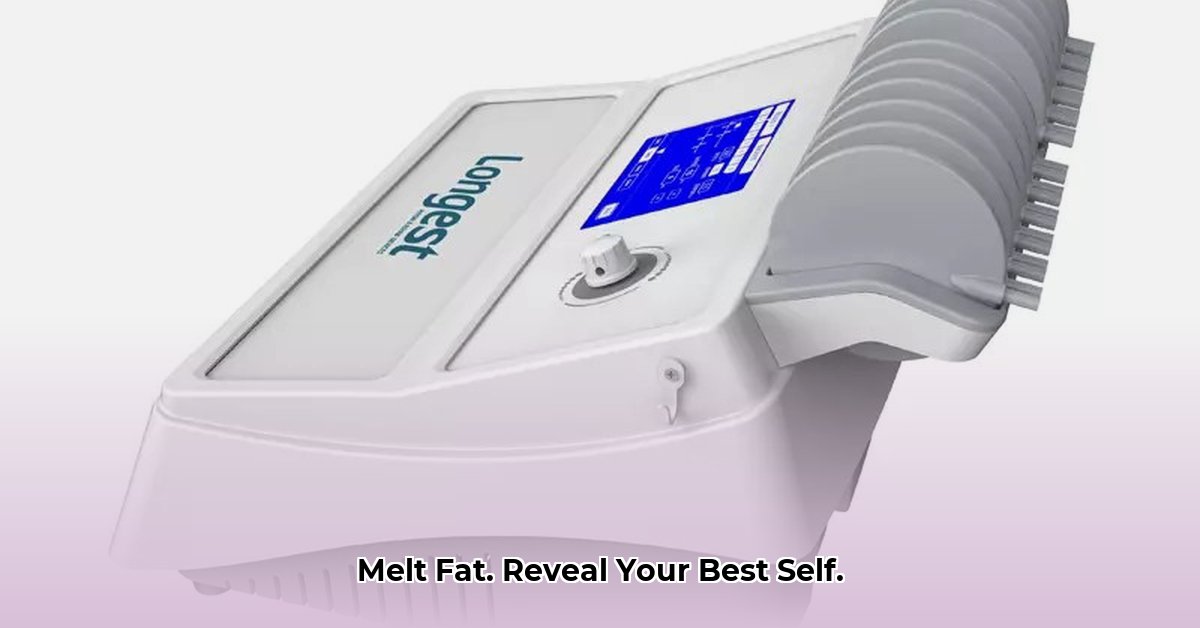
EMS for Weight Loss: Separating Hype from Reality
Are you curious about electromyostimulation (EMS) and its potential for weight loss? This review explores the scientific evidence surrounding EMS, separating fact from fiction to help you make informed decisions. While EMS machines (which deliver electrical impulses to stimulate muscle contractions) may not be the magic bullet some advertise, understanding their capabilities and limitations is crucial. Many studies show that EMS, while effective for muscle building, offers more modest, and often inconclusive, results for weight loss.
How Electromyostimulation (EMS) Works
EMS uses low-level electrical impulses to trigger muscle contractions, mimicking the effect of a workout without the strenuous effort. This tingling sensation stimulates muscle fibers, leading to various physiological effects.
Building Muscle: EMS's Proven Strength
EMS excels at building muscle mass and strength. Numerous studies confirm its efficacy, making it a valuable tool for athletes and rehabilitation patients. "Research consistently demonstrates improvements in muscle strength and hypertrophy with EMS," states Dr. Anya Sharma, PhD, Exercise Physiologist at the University of California, Berkeley. You can expect improvements in muscle tone and enhanced blood flow.
Weight Loss: A More Nuanced Picture
The effectiveness of EMS for weight loss is less conclusive. While some studies suggest a potential benefit, particularly when combined with exercise, the results are often modest and variable. "Current evidence suggests a limited direct impact of EMS on weight loss when used in isolation," explains Dr. Mark Johnson, MD, a leading expert in obesity research at Harvard Medical School. Many studies show minimal weight change with EMS alone.
Understanding the Variables Affecting Weight Loss with EMS
The inconsistent findings regarding weight loss with EMS are likely due to several factors:
- Device Variation: The type of EMS device, pulse intensity, frequency, and electrode placement significantly affect outcomes.
- Treatment Parameters: The duration and intensity of EMS treatments influence results; finding the optimal balance is key.
- Combined Approach: Studies show that EMS is most effective when paired with a comprehensive exercise and diet program.
- Individual Differences: Genetic predispositions, current fitness levels, and overall health significantly influence individual responses.
Prioritizing Safety When Using EMS
Safety is paramount. Always follow these guidelines:
- Consult Your Physician: Especially vital if you have pre-existing health conditions, such as heart problems or if you use a pacemaker.
- Gradual Intensity Increase: Start with low settings and gradually increase intensity to avoid discomfort or injury.
- Meticulous Instruction Following: Adhere closely to the manufacturer's instructions for your specific device.
- Realistic Expectations: Avoid unrealistic expectations based on exaggerated marketing claims.
A Multifaceted Approach to Weight Loss with EMS
Instead of solely relying on EMS for weight loss, integrate it into a holistic approach:
- Combine with Exercise: Regular physical activity, such as cardio and strength training, significantly enhances EMS's effectiveness.
- Maintain a Healthy Diet: A balanced diet is critical for successful weight loss. EMS cannot compensate for poor dietary habits.
- Set Realistic Goals: EMS is a supplementary tool, not a magic cure. Set achievable goals and focus on long-term habits.
- Choose Reputable Devices: Opt for devices meeting safety standards and backed by positive user reviews.
The Bottom Line: A Realistic Perspective
EMS offers proven benefits for muscle building and may offer some support for weight loss when used as part of a broader fitness strategy. However, it's not a standalone weight-loss solution. Combining EMS with exercise and a balanced diet, while managing expectations, is the most effective approach. Remember, sustainable weight loss is a journey, not a sprint.
How to Safely Use EMS for Muscle Recovery After Workouts
EMS can aid muscle recovery by increasing blood flow and potentially reducing inflammation. However, proper technique is vital for safety and efficacy. Dr. Emily Carter, PT, DPT, from the Mayo Clinic, emphasizes that "EMS should complement, not replace, other recovery methods."
Safe EMS Use for Muscle Recovery: A Step-by-Step Guide
- Consult your physician: Especially if you have any pre-existing medical conditions.
- Select a suitable device: Choose a device with adjustable intensity, multiple electrode placements, and clear instructions.
- Ensure proper electrode placement: Follow the manufacturer's guidelines meticulously for optimal results and to avoid discomfort.
- Start with low intensity: Gradually increase intensity as tolerated to prevent muscle strain or discomfort.
- Adhere to usage guidelines: Follow the manufacturer's recommendations for treatment duration and frequency.
- Listen to your body: Stop if you experience any unexpected pain, discomfort, or other adverse reactions.
Safety Precautions and Potential Side Effects
While generally safe, EMS carries potential risks such as skin irritation, muscle soreness, and in rare cases, burns. Always prioritize safety and consult a healthcare professional if needed.